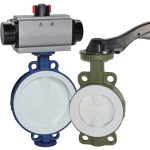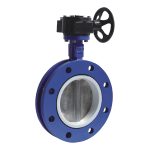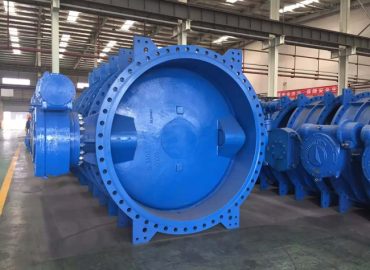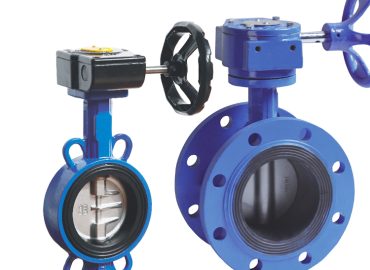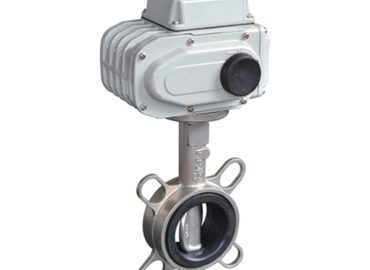Butterfly valve are integral components in various industrial applications, playing a pivotal role in regulating and isolating the flow of fluids. Among these, the 3-inch stainless steel butterfly valve stands out for its unique combination of durability, functionality, and size-specific advantages. In this blog post, we will unveil the intricacies of its operation and the features that make it a preferred choice in many industries. We’ll delve into the mechanics of how it works, explore its myriad benefits, and discuss its wide range of applications. Whether you’re a seasoned engineer or simply curious about industrial machinery, join us as we explore the fascinating world of 3-inch stainless steel butterfly valves.
Introduction
The 3-inch stainless steel butterfly valve is a marvel of engineering, balancing robustness and precision in its function. This valve operates on a simple principle: a disc is situated in the center of the pipe, and a rod passes through the disc to an actuator located on the outside of the valve. The actuator, when turned, rotates the disc either parallel or perpendicular to the flow of fluid. When the disc is turned so that it’s parallel, it allows the fluid to pass through – this is the ‘open’ position of the valve. Conversely, when the disc is turned perpendicular to the flow, it blocks the passage, effectively stopping the flow – this is the ‘closed’ position. The 3-inch size of this valve makes it versatile for numerous applications, from home plumbing systems to industrial processes. It’s made of stainless steel, a material known for its durability and resistance to corrosion, making it an ideal choice for handling a variety of fluids, including those that are corrosive or acidic in nature. Furthermore, the design of butterfly valve allows for quick shutoff, which can be crucial in emergency situations. They are also appreciated for their relatively low cost and easy maintenance, as the disc and the seal are the only parts exposed to wear. Therefore, despite their simplicity, 3-inch stainless steel butterfly valve pack a punch when it comes to functionality and operation, providing an efficient and reliable solution for flow control.
Brief explanation of what a butterfly valve is
A butterfly valve is a type of flow control device, typically used to regulate a fluid flowing through a section of a pipe. The valve is named after the butterfly-like appearance of its main operational component – a disc that is mounted on a rotating shaft. When the valve is closed, the disc is turned so it completely blocks off the passageway. When the valve is open, the disc is rotated a quarter turn so it allows unrestricted passage of the fluid. The position of the disc is effected by the operator through the use of a handle or a wheel, or in more complex systems, by automated mechanisms. Butterfly valve are known for their durability, high performance, cost-effectiveness, and ease of installation, making them a common choice in numerous industrial applications.
Importance of stainless steel in valve manufacturing
Stainless steel plays a crucial role in valve manufacturing due to its impressive properties that make it ideal for a range of applications. Known for its exceptional durability, stainless steel is resistant to corrosion, rust, and staining, which makes it perfect for use in environments where the valve may be exposed to harsh or corrosive fluids. Its strength ensures that valves can withstand high pressures and temperatures without deformation or failure. Stainless steel also has excellent hygienic qualities, making it an ideal material for industries such as food and beverage or pharmaceutical, where cleanliness and sanitation are paramount. Additionally, its low maintenance requirements and long service life make it a cost-effective choice in the long run. Therefore, the use of stainless steel in valve manufacturing contributes significantly to the efficiency, reliability, and longevity of these essential components.
Introduction to the 3-inch stainless steel butterfly valve
The 3-inch stainless steel butterfly valve is a remarkable piece of engineering designed to control and regulate the flow of various types of fluids in a pipeline. Its name derives from the butterfly-like appearance of its main component – a disc that rotates around a central axis, much like a butterfly flapping its wings. This disc, when turned by an operator or automated system, can either allow fluid to pass through (when it’s parallel to the flow) or halt the flow completely (when it’s perpendicular). The 3-inch specification refers to the diameter of the pipe in which the valve is installed, making this valve suitable for a wide range of applications, from domestic water systems to industrial processes. Its construction from stainless steel ensures not only a robust and durable valve capable of withstanding high pressures and temperatures but also resistance to corrosion, ensuring a long service life even when dealing with harsh or corrosive fluids.
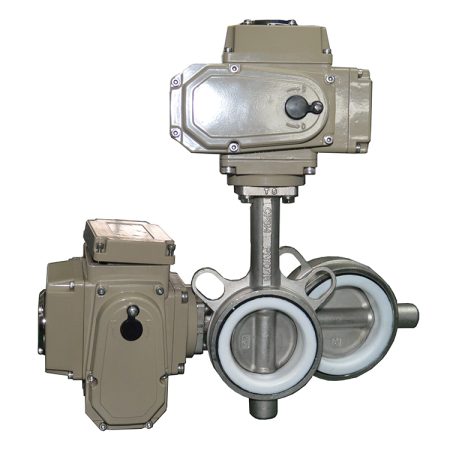
What is a 3-Inch Stainless Steel Butterfly Valve?
A 3-Inch Stainless Steel Butterfly Valve is a specialized form of control valve used in a myriad of industrial and domestic applications for regulating the flow of different kinds of fluids. As the name suggests, this type of valve has a diameter of three inches and is made from stainless steel, a material known for its exceptional durability, corrosion resistance, and strength. The ‘butterfly’ in its name comes from the design of its key operational component: a disc that’s mounted on a rotating shaft, which looks like a butterfly when viewed from the end. This disc operates by rotating within the valve body to either allow fluid to pass through or stop it. When the disc is aligned parallel with the flow of fluid, the valve is in the open position, allowing unrestricted passage. Conversely, when the disc is positioned perpendicular to the flow, the valve is closed, blocking all fluid passage. The rotation of the disc is controlled by an operator using a handle or wheel, or in more complex systems, can be automated. Apart from its robustness and longevity, a significant advantage of a 3-inch stainless steel butterfly valve is its versatility; it can be employed in a wide array of environments – from wastewater treatment plants to food and beverage factories – and handle a variety of substances, including water, gas, and corrosive chemicals. Furthermore, due to its compact size and ease of installation, it is a cost-effective solution for flow regulation needs.
Detailed description of a 3-inch stainless steel butterfly valve
A 3-inch stainless steel butterfly valve is a meticulously engineered device used to regulate fluid flow in various systems and pipelines. The valve gets its name from the unique disc mechanism that rotates like a butterfly’s wings. This disc, which is centrally mounted on a robust shaft, controls the flow of fluid through the pipeline. When the disc aligns parallel to the fluid flow, the valve is fully open, offering minimal resistance and maximum flow. Conversely, when the disc is turned perpendicular to the flow, the valve is closed, effectively blocking the passage of fluid.
The ‘3-inch’ label refers to the nominal diameter of the valve, signifying it’s designed for use in a 3-inch pipeline system. Made of high-quality stainless steel, this marine butterfly valve boasts superior durability, corrosion resistance, and ability to withstand high pressures and temperatures. This makes it ideal for demanding environments and applications, including those involving harsh or corrosive fluids.
These butterfly valve often come with either manual handles or automated actuators for operation. Manual handles are simple to operate but require physical effort to open or close the valve. On the other hand, automated actuators can be controlled remotely, providing ease of operation, especially in larger or more complex systems.
The 3-inch stainless steel butterfly valve is a versatile and reliable component, applicable in a wide range of industries such as water treatment, oil and gas, food and beverage, and pharmaceuticals. Its compact design, easy installation, and low maintenance requirements make it a cost-effective solution for flow control needs.
Explanation of why the size (3-inch) matters
The size of a butterfly valve, in this case, 3-inch, is a crucial parameter that determines its compatibility and effectiveness within a pipeline system. The ‘3-inch’ refers to the nominal diameter of the pipe that the valve is designed to fit. This means the butterfly valve can be installed in a pipeline with a 3-inch diameter. The size matters because it directly impacts the volume of fluid that can pass through the valve at any given time, thus influencing the overall efficiency of the flow control system. A correctly sized valve ensures optimal performance, prevents leakage, and avoids undue stress on the pipeline. Conversely, using a valve that’s too large or small for a particular pipeline can lead to inefficiencies, such as reduced flow rate, increased energy consumption, or even damage to the valve and pipeline. Therefore, choosing a butterfly valve with the correct size – like the 3-inch stainless steel butterfly valve for a 3-inch pipeline – is essential for maintaining an effective and efficient flow control system.
Discussion on the different types of materials used, highlighting stainless steel
Butterfly valves are made from a variety of materials, each offering different benefits and suited to specific applications. Common materials include cast iron, ductile iron, carbon steel, plastic, and stainless steel. Cast iron and ductile iron are known for their durability and cost-effectiveness, but they may not be suitable for corrosive environments. Carbon steel offers high strength and toughness, but it can also corrode if not properly maintained. Plastic valves, on the other hand, are resistant to most types of corrosion but may not withstand high temperatures or pressures.
Stainless steel, however, is a standout material for butterfly valves due to its impressive properties. Stainless steel butterfly valves, like the 3-inch variant, are incredibly durable and resistant to both corrosion and high temperatures. This makes them ideal for challenging applications involving harsh or corrosive fluids, or where high hygiene standards are required, such as in the food and beverage or pharmaceutical industries. In addition, stainless steel’s aesthetic appeal and ability to maintain its integrity over time contribute to its popularity for visible installations. Despite being more expensive than some other materials, the longevity and reliability of stainless steel often result in a lower total cost of ownership over the valve’s lifetime.
Working Principle of a 3-Inch Stainless Steel Butterfly Valve
A 3-inch stainless steel butterfly valve operates on a simple yet effective principle that allows it to control fluid flow within a pipeline system. The key component of this valve is a disc, which is positioned in the middle of the pipe. The disc is attached to a rod, which in turn, is connected to an actuator on the outside of the valve. This actuator can be manually operated or automated, depending on the specific model.
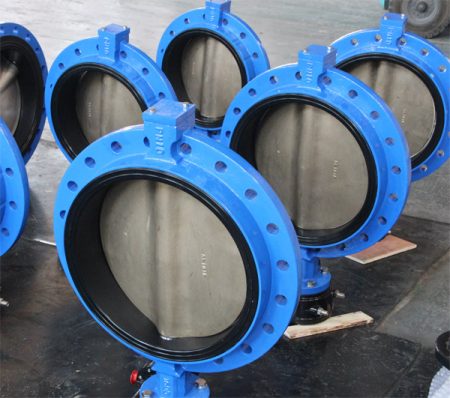
When the actuator turns the rod, the disc rotates accordingly. If the disc is rotated so that it’s parallel to the fluid flow (in the same direction as the pipeline), the valve is in the fully open position. In this position, the fluid can flow freely through the valve with minimal resistance, allowing for maximum flow rate.
Conversely, when the disc is rotated so that it’s perpendicular to the fluid flow (across the pipeline), the valve is in the fully closed position. Here, the disc blocks the passage of fluid completely, effectively stopping the flow. There are also intermediate positions where the disc is partially open, allowing for precise control over the flow rate.
The size of the valve, in this case, 3-inch, refers to the nominal diameter of the pipeline in which the valve is designed to be installed. This determines the volume of fluid that the valve can handle at any given time. The stainless steel construction of the valve offers superior durability and resistance to corrosion, making it ideal for use in harsh environments and with corrosive fluids.
Overall, the working principle of a 3-inch stainless steel butterfly valve relies on the simple rotation of a disc to control fluid flow. This straightforward mechanism, combined with the robustness of stainless steel, makes these valves a reliable and efficient choice for various industries and applications.
Explanation of how a butterfly valve operates
A wafer butterfly valve operates on a relatively simple mechanism. It is composed of a disc mounted on a rotating shaft. When the butterfly valve is fully open, the disc is turned so that it allows fluid to flow through almost unrestricted. The disc is positioned in the middle of the pipe and its rotation is controlled by an operator or actuator connected to the external part of the valve. As the operator turns the handle, the disc rotates on the shaft, either parallel or perpendicular to the flow of the fluid. When the disc is turned so that it’s perpendicular to the flow, the valve is fully closed, and the fluid flow is blocked. The ability of the butterfly valve to completely block the flow of fluid makes it an excellent choice for isolating or interrupting the flow within a system. Intermediate positions, where the disc is not entirely parallel or perpendicular to the flow, provide for regulating the flow of fluid, allowing operators to control the rate at which fluid passes through the valve.
Discussion on the role of the disc, stem, and other components
In a butterfly valve, each component plays a crucial role in its operation. The disc is perhaps the most notable part of the valve. It is a thin, round piece that rotates around the stem, which is the rod-like structure extending outward from the disc. When the disc is rotated to align with the flow of fluid, the valve is open, and when it’s rotated perpendicular to the flow, the valve is closed. This rotation is facilitated by the stem, which acts as the disc’s axis of rotation.
The stem is connected to an actuator or handle on the outside of the valve, which allows for manual or automatic control of the disc’s position. Depending on the design of the valve, the stem can either be a one-piece design that goes through the disc, known as a through-stem design, or a two-piece design where the stem is attached to the disc on both sides, known as a double offset design.
Other essential components include the body, which houses the disc and stem and connects to the pipeline; the seat, which forms a seal with the disc when the valve is closed to prevent leaks; and the packing, which prevents leakage along the stem. Each of these components contributes to the overall functionality and efficiency of the butterfly valve, making it a reliable option for controlling fluid flow in various applications.
Description of how the 3-inch size impacts the operation
The 3-inch size of a lug butterfly valve refers to the nominal diameter of the pipeline in which the valve is to be installed. This size significantly impacts the operational capacity of the valve as it determines the volume of fluid the valve can control at any given time. In essence, a larger valve diameter allows for a greater flow rate. A 3-inch butterfly valve is designed to accommodate a moderate flow rate, making it suitable for many industrial applications.
The size also affects the physical dimensions of the valve, including the disc and the body. A 3-inch valve will have a disc that’s approximately 3 inches in diameter, enabling it to effectively block the flow in a 3-inch pipeline when in the closed position. The body of the valve, which houses the disc and stem, will also be proportionally sized to fit within a 3-inch pipeline system.
Furthermore, the size of the valve influences the torque requirements for operating the valve. Larger valves generally require more torque to open and close due to the increased fluid pressure acting on a larger disc surface area. However, in the case of a 3-inch butterfly valve, the torque requirements are relatively low, allowing for easy operation and control.
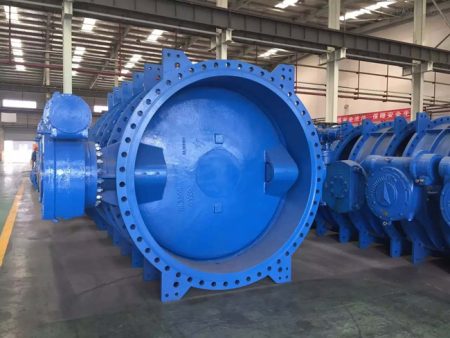
Benefits of Using 3-Inch Stainless Steel Butterfly Valves
3-inch stainless steel butterfly valves offer several advantages that make them an ideal choice for a wide range of applications. Firstly, the 3-inch size is versatile and can accommodate a moderate flow rate, making it suitable for numerous industrial and commercial settings. The stainless steel construction adds to the durability and longevity of the valve, as it’s resistant to corrosion and rust, even in harsh environments or when dealing with corrosive fluids. This means that stainless steel butterfly valves can maintain their functionality and integrity for a long time, reducing the need for frequent replacements and thus lowering maintenance costs.
Moreover, stainless steel is known for its strength and toughness, which means these valves can withstand high pressure and temperature conditions without deforming or failing. This makes them a reliable choice for critical applications where system failure could have significant consequences.
The 3-inch size also means these valves are relatively compact and lightweight, which makes installation and maintenance easier and less labor-intensive than larger, heavier valves. Despite their small size, they can efficiently control the flow of fluid, thanks to the design of the disc and stem.
Another key benefit of 3-inch stainless steel butterfly valves is their ease of operation. They generally require less torque to open and close compared to larger valves, which simplifies the operation and reduces the energy needed to control the valve, leading to lower operational costs.
Finally, the tight-sealing design of butterfly valves ensures minimal leakage when the valve is in the closed position. This feature, combined with the robustness of stainless steel, provides an effective solution for isolating sections of a pipeline or for regulating the flow of fluid, contributing to the overall efficiency and safety of the system.
In summary, 3-inch stainless steel butterfly valves offer a combination of versatility, durability, reliability, and cost-effectiveness that makes them an excellent choice for many fluid control applications.
Discussion on the advantages of using stainless steel butterfly valves
Stainless steel butterfly valves offer a host of advantages that make them highly desirable for a variety of applications. One of the most significant benefits is their excellent resistance to corrosion. Stainless steel’s inherent corrosion-resistant properties make these valves suitable for use in environments where they might be exposed to corrosive fluids or harsh conditions, thus enhancing their durability and longevity.
Another advantage is the strength of stainless steel, which allows these valves to withstand high pressure and temperature levels without deforming or losing functionality. This makes them a reliable choice for critical applications in various industries such as oil and gas, chemical processing, and power generation.
Furthermore, stainless steel butterfly valves are easy to maintain due to their robust construction and resistance to wear and tear. They require minimal maintenance, which can lead to significant cost savings over time.
These valves also provide efficient flow control, thanks to their design. The disc in a butterfly valve can be quickly and easily rotated to regulate the flow of fluid, providing precise control over process operations.
Finally, stainless steel butterfly valves are environmentally friendly. Stainless steel is 100% recyclable, and its long lifespan means that it doesn’t need to be replaced frequently, reducing waste and contributing to sustainability efforts. Overall, the use of stainless steel butterfly valves offers numerous benefits in terms of performance, durability, cost-effectiveness, and environmental impact.
Explanation of how the 3-inch size benefits certain applications
The 3-inch size of a butterfly valve is particularly beneficial due to its versatility and adaptability in various applications. Its moderate size makes it suitable for use in both large industrial installations and smaller commercial or residential systems, making it a popular choice across diverse sectors. This size can effectively manage a significant flow rate without the bulkiness that comes with larger valves, ensuring efficient operation while saving space.
In many applications, such as water treatment plants, chemical processing facilities, and HVAC systems, space can be a limiting factor. A 3-inch butterfly valve, with its compact design, can fit into tight spaces while still providing effective flow control. Furthermore, these valves are lighter and easier to install and maintain compared to their larger counterparts, reducing labor costs and downtime.
The relatively small disc in a 3-inch butterfly valve also requires less torque to operate, leading to lower energy consumption. This can be a significant advantage in applications where energy efficiency is a priority. Overall, the 3-inch size offers an excellent balance of performance, efficiency, and convenience, making it a valuable asset in a multitude of applications.
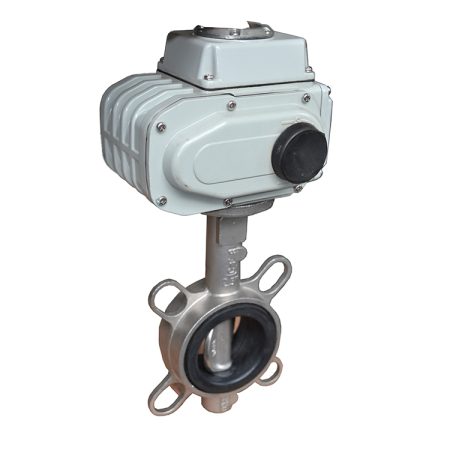
Real-world examples or case studies illustrating these benefits
In the world of wastewater treatment, 3-inch stainless steel butterfly valves play a significant role. For instance, at a wastewater treatment plant in California, these valves were installed to control the flow of water and various chemicals used in the purification process. The plant reported that the valves’ 3-inch size made them easy to install in the compact spaces of the facility, and their stainless steel construction ensured they held up well against the corrosive elements present in the wastewater.
In another case, a chemical processing company in Texas switched to using 3-inch stainless steel butterfly valves in their operations. They found that the valves’ strength and corrosion resistance made them ideal for handling the high-pressure, high-temperature, and corrosive environments typical in chemical processing. The company also reported lower maintenance costs and less downtime since the switch, attributing these improvements to the durability and reliability of the stainless steel valves.
Similarly, a craft brewery in Oregon chose 3-inch stainless steel butterfly valves to regulate the flow of their brews. The brewery appreciated the precise control over the liquid flow the valves provided, critical for their brewing process. They also noted that the valves’ compact size was beneficial in their facility where space was at a premium. These examples illustrate the versatility and effectiveness of 3-inch stainless steel butterfly valves across various industries.
Applications of 3-Inch Stainless Steel Butterfly Valves
3-inch stainless steel butterfly valves find extensive applications across a variety of industries owing to their robustness, precision, and compact size. In the water and wastewater treatment industry, these valves play a crucial role in controlling the flow of water and various chemicals involved in the purification process. They are resistant to the corrosive elements present in wastewater, making them reliable for long-term use.
In chemical processing plants, these valves are employed due to their ability to withstand high-pressure, high-temperature, and corrosive environments. They efficiently regulate the flow of aggressive chemicals and gases, contributing to safer and more efficient operations. In oil and gas industries, 3-inch stainless steel butterfly valves are used in pipelines and storage tanks to manage the flow of oil and gas. Their strength and durability make them suitable for these demanding applications.
In the food and beverage industry, these valves are favored for their hygienic properties and ease of cleaning, critical for maintaining food safety standards. Breweries, for instance, use these valves to control the flow of their brews during various stages of the brewing process. Similarly, they are used in dairy processing plants to manage the flow of milk and other dairy products.
In HVAC systems, these valves are used to control the flow of heating and cooling fluids, contributing to energy efficiency and comfort. The compact size of these valves makes them suitable for installation in tight spaces typically found in HVAC systems.
Pharmaceutical and biotech companies also utilize these valves in their processing equipment due to their corrosion resistance and ability to maintain a sterile environment, vital for these sensitive applications.
Marine applications, where corrosion resistance is paramount due to constant exposure to seawater, also benefit from the use of 3-inch stainless steel butterfly valves. They are used in various marine systems, including ballast water systems, cooling systems, and fuel systems.
Lastly, in fire protection systems, these valves are used to control the flow of water in sprinkler systems, proving crucial in emergency situations. Their reliability and durability make them a trusted choice for such critical applications. Thus, the application of 3-inch stainless steel butterfly valves spans across numerous industries, underlining their versatility and effectiveness.

Overview of industries and applications where these valves are used
3-inch stainless steel butterfly valves are versatile components used across a broad spectrum of industries for their durability, precision, and compact size. In the water and wastewater treatment industry, they control the flow of water and harsh chemicals, thanks to their corrosion-resistant properties. The chemical processing industry utilizes these valves due to their ability to handle high-pressure, high-temperature environments, and aggressive chemicals. Oil and gas sectors employ them in pipelines and storage tanks for regulating oil and gas flow. The food and beverage industry, including breweries and dairy processing plants, appreciate these valves for their hygienic properties, ease of cleaning, and precise flow control. They are also found in HVAC systems, controlling the flow of heating and cooling fluids, contributing to energy efficiency. Pharmaceutical and biotech industries value them for maintaining sterile environments in sensitive applications. Marine industries use them in various systems like ballast water systems, cooling systems, and fuel systems for their corrosion resistance. Finally, in fire protection systems, these valves play a critical role in controlling water flow in sprinkler systems.
Detailed examples of how they function in different settings
3-inch stainless steel butterfly valves function differently based on the specific requirements of various industries. In a water treatment plant, for example, these valves control the flow of water and chemicals during the purification process. They can be adjusted to allow more or less fluid through, depending on the stage of treatment, and their corrosion-resistant properties ensure they withstand exposure to harsh chemicals.
In a chemical processing facility, these valves are used in high-pressure and high-temperature environments where aggressive chemicals are in play. Here, the valve’s robustness allows it to handle extreme conditions without compromising its functionality or lifespan.
In the food and beverage industry, such as in a brewery, these valves regulate the flow of brews during different stages of the brewing process. The brewer can adjust the valve to control the amount of liquid flowing through, ensuring consistency and quality in each batch. The stainless steel construction makes the valve easy to clean, maintaining hygiene standards.
In an HVAC system, these valves control the flow of heating and cooling fluids. By adjusting the valve, the system can regulate the amount of fluid passing through, affecting the temperature of the air being circulated. This precise control contributes to energy efficiency and comfort.
In a fire protection system, these valves control the flow of water in sprinkler systems. In the event of a fire, the valve can be opened to allow a large volume of water to pass through quickly, helping to suppress the fire effectively.
Thus, while the basic functioning of a 3-inch stainless steel butterfly valve remains the same—controlling fluid flow—their application and impact can vary significantly based on the industry and setting.
Discussion on any limitations or challenges in their use
Despite the versatility and robustness of 3-inch stainless steel butterfly valves, they are not without limitations or challenges. One of the main limitations is that these valves may not be suitable for use with certain types of media, such as very thick liquids or liquids with large solid particles, as they can cause blockages or damage to the valve. Additionally, while they are generally resistant to corrosion, certain highly corrosive substances may still cause wear and tear over extended periods of usage, leading to reduced efficiency or failure.
Another challenge is related to precision control. While butterfly valves are excellent for controlling large flow volumes, they might not provide the same level of precision as other valve types when it comes to managing very low flow rates. This lack of precise control at low flow rates can be a disadvantage in applications where fine-tuning of fluid flow is critical.
Furthermore, despite their robust construction, these valves can suffer from mechanical failures, such as issues with the actuator or sealing, which can lead to leaks or complete shutdown of the valve. Regular maintenance and inspections are necessary to prevent such issues, adding to the operational costs.
Lastly, while the compact size of these valves is usually an advantage, in some cases, it could pose installation challenges, especially in systems with space constraints or complex piping configurations. Thus, while 3-inch stainless steel butterfly valves offer numerous advantages, these potential limitations and challenges need to be considered during selection and usage.
Maintenance and Longevity of 3-Inch Stainless Steel Butterfly Valves
The maintenance and longevity of 3-inch stainless steel butterfly valves are key factors that contribute to their widespread use across various industries. These valves are designed to be robust and durable, often providing years of reliable service with minimal maintenance. However, regular inspections and preventative maintenance are crucial to ensure their optimal functioning and extend their lifespan. Regular maintenance usually involves checking for any signs of wear and tear, such as leaks or reduced performance, which could indicate issues with the sealing mechanism or the actuator. Any detected issues should be addressed promptly to prevent further damage.
Proper cleaning is also vital, especially in industries like food and beverage or pharmaceuticals where hygiene is paramount. The stainless steel construction of these valves is advantageous in this regard, as it allows for easy cleaning and sterilization without the risk of corrosion. However, care should be taken to use appropriate cleaning agents that won’t damage the valve materials.
Lubrication of the moving parts is another important aspect of maintenance. This helps reduce friction, ensuring smooth operation and reducing wear and tear. Again, the type of lubricant used should be compatible with the valve materials and the media being controlled to avoid any adverse reactions.
In terms of longevity, while these valves are generally long-lasting, their lifespan can be influenced by several factors. These include the frequency of use, the type of media they control, the operating conditions (such as pressure and temperature), and how well they are maintained. With proper care and under optimal conditions, 3-inch stainless steel butterfly valves can offer excellent service for many years. However, it’s worth noting that even with the best maintenance, all mechanical components have a finite lifespan and will eventually need to be replaced. Therefore, having a plan for timely replacement and ensuring availability of spare parts is also part of effective valve management.
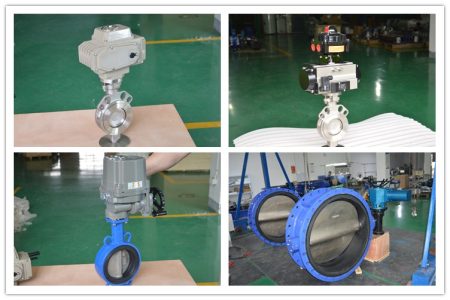
Tips for maintaining these valves for optimal performance
Maintaining 3-inch stainless steel butterfly valves for optimal performance requires a combination of regular inspections, timely repairs, and preventative measures. Start with routine inspections to identify any signs of wear or damage early on. This includes checking for leaks, testing the functionality of the actuator, and inspecting the sealing mechanism for any signs of degradation. If any issues are detected, timely repairs or replacements should be carried out to prevent further damage and maintain optimal performance.
Cleaning and lubrication are also critical. The valve should be cleaned regularly using appropriate cleaning agents that won’t harm the stainless steel material. Lubricating the moving parts of the valve can help reduce friction and prevent wear and tear, thus enhancing its performance and lifespan. However, ensure the lubricant used is compatible with both the valve materials and the controlled media.
Moreover, avoid pushing the valve beyond its specified pressure and temperature limits, as this can cause unnecessary strain and lead to premature failure. Also, if the valve is used with aggressive or corrosive media, consider implementing additional protective measures, such as using corrosion-resistant coatings, to extend the valve’s service life.
Additionally, keep a record of all maintenance activities. This can help track the valve’s performance over time, identify recurring issues, and plan for preventative maintenance or replacements. Lastly, always consult the manufacturer’s guidelines for specific maintenance instructions, as these can vary depending on the exact model and application of the valve. By following these tips, you can ensure the longevity and reliability of your 3-inch stainless steel butterfly valves.
Information about their expected lifespan
Life expectancy is a statistical measure that estimates the average number of years a person is expected to live. As of 2019, the United Nations estimated a global average life expectancy of 72.6 years, which is higher than any country’s average back in 1950. However, there are significant differences in life expectancy between countries and genders. For instance, in the United States, life expectancy for women dropped from 79.9 years in 2020 to 79.1 years in 2021, while for men it was slightly lower. The world average age of death stands at 68.9 years for men and 73.9 years for women. Within the European Union, these figures are higher, with life expectancies of 77.7 years for men and 83.3 years for women. Some countries, like Japan, Switzerland, Singapore, and Italy, have even higher life expectancies, reaching up to 84.95 years in Japan as of 2023 . It’s important to note that these are average figures and individual life spans can vary significantly based on factors like health, lifestyle, and genetics .
Suggestions for troubleshooting common issues
Troubleshooting common issues with 3-inch stainless steel butterfly valves often involves identifying symptoms and diagnosing the root cause. If a valve is leaking, it might be due to a damaged or worn-out seal, improper installation, or excessive pressure. In such cases, inspect the seal for damage and replace if necessary, ensure the valve is correctly installed as per the manufacturer’s guidelines, and verify that the operating conditions are within the specified limits. If the valve is not opening or closing properly, it could be due to a faulty actuator or an obstruction in the pipeline. Check the actuator for any signs of malfunction and clear the pipeline of any potential blockages. If the valve’s performance has decreased over time, it may be due to wear and tear or build-up of debris. Regular cleaning and maintenance can help mitigate these issues. Always refer to the manufacturer’s manual for specific troubleshooting advice and consider seeking professional help if the problem persists. Remember, safety should be your priority when dealing with such equipment, so always follow proper safety procedures during troubleshooting and repair.

Conclusion
In conclusion, the functionality and operation of 3-inch stainless steel butterfly valves is a testament to their critical role in controlling fluid flow across numerous industries. From wastewater treatment plants to beverage factories, these versatile devices stand as the unsung heroes ensuring efficiency and safety.
Their design is ingeniously simple yet highly functional, comprising a disc positioned in the middle of a pipe and an actuator to control the disc’s rotation. This simplicity enables them to efficiently regulate fluid flow, maintain pressure balance, and even completely shut off when necessary.
The choice of stainless steel as the primary material for these valves is no coincidence. It offers unparalleled durability, corrosion resistance, and the ability to withstand high pressures and temperatures, making it ideal for harsh operating conditions. Moreover, the compact size of these 3-inch valves makes them perfect for applications where space is a constraint.
However, like all mechanical devices, these valves require regular maintenance and care. Regular inspections, timely repairs, and preventative measures are crucial for maintaining optimal performance and extending their lifespan. Cleaning and lubrication are also essential, as is adhering to the specified pressure and temperature limits.
Moreover, understanding their expected lifespan can help in planning for replacements and avoiding sudden breakdowns. Though they are built to last, their lifespan can be significantly influenced by factors such as operating conditions, maintenance practices, and the nature of the controlled media.
Troubleshooting common issues forms an integral part of their operation. Whether it’s dealing with leaks, malfunctioning actuators, or decreased performance over time, having a systematic approach to identifying and resolving problems can ensure uninterrupted operation.
As we’ve unveiled the intricacies of 3-inch stainless steel butterfly valves, it’s clear that they are more than just simple mechanisms. They represent a harmonious blend of engineering prowess and practical utility. And while they might be small in size, their impact on our daily lives is undoubtedly significant. By understanding their functionality and operation, we can better appreciate their role in our world and ensure that they continue to serve us efficiently for years to come.
Recap of the main points discussed in the blog
To recap, the blog post delved into the functionality and operation of 3-inch stainless steel butterfly valves. We started by understanding their basic design and how they work to regulate fluid flow in various industries. The use of stainless steel was highlighted due to its durability, corrosion resistance, and ability to withstand high pressures and temperatures. The compact size of these 3-inch valves was also discussed, emphasizing their suitability for space-constrained applications. We then moved on to discuss the importance of regular maintenance and care to ensure optimal performance and longevity. The expected lifespan of these valves was covered, highlighting the factors that can influence it. Finally, we talked about troubleshooting common issues associated with these valves, stressing the importance of systematic problem identification and resolution for uninterrupted operation.
Final thoughts on the importance and utility of 3-inch stainless steel butterfly valves
In conclusion, the importance and utility of 3-inch stainless steel butterfly valves cannot be overstated. These devices are fundamental to a myriad of industries, from wastewater treatment to food processing, where they regulate and control fluid flow efficiently. Their robust stainless steel construction ensures durability and resistance to harsh conditions, while their compact size allows for installation in space-constrained environments. With proper maintenance and troubleshooting, these valves can have a significant lifespan, delivering optimal performance throughout. Ultimately, the understanding and appreciation of these seemingly simple yet incredibly important devices underscore the marvels of engineering that often go unnoticed in our everyday lives. They truly are unsung heroes in our modern industrial processes.




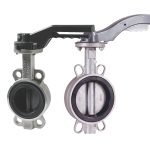

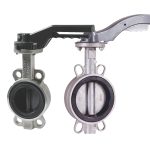
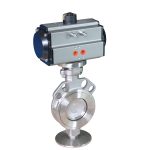
-150x150.jpg)
